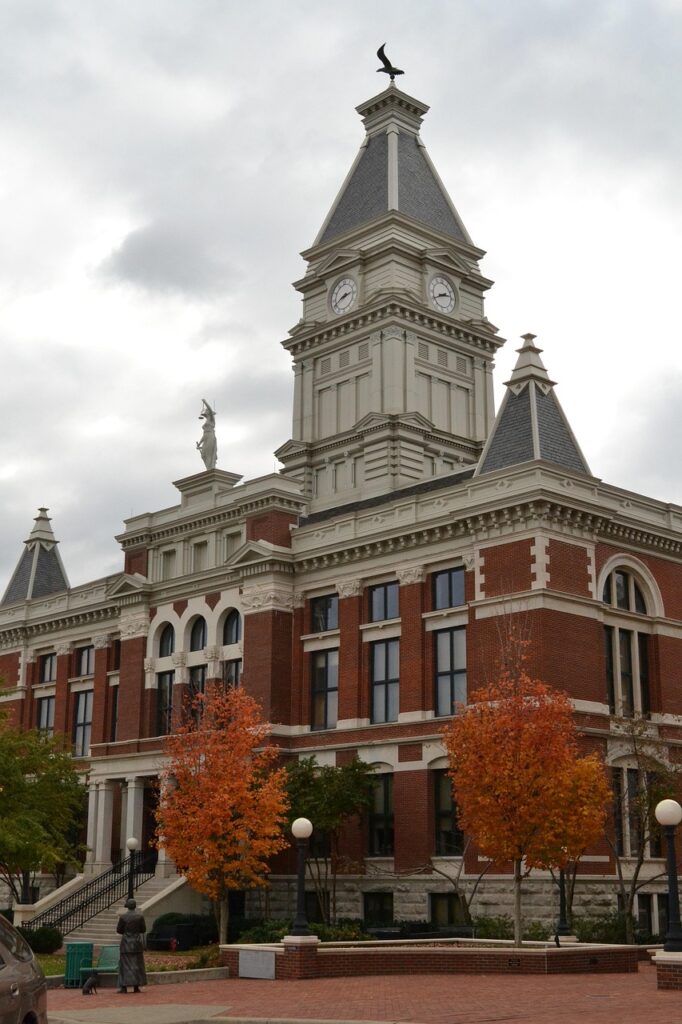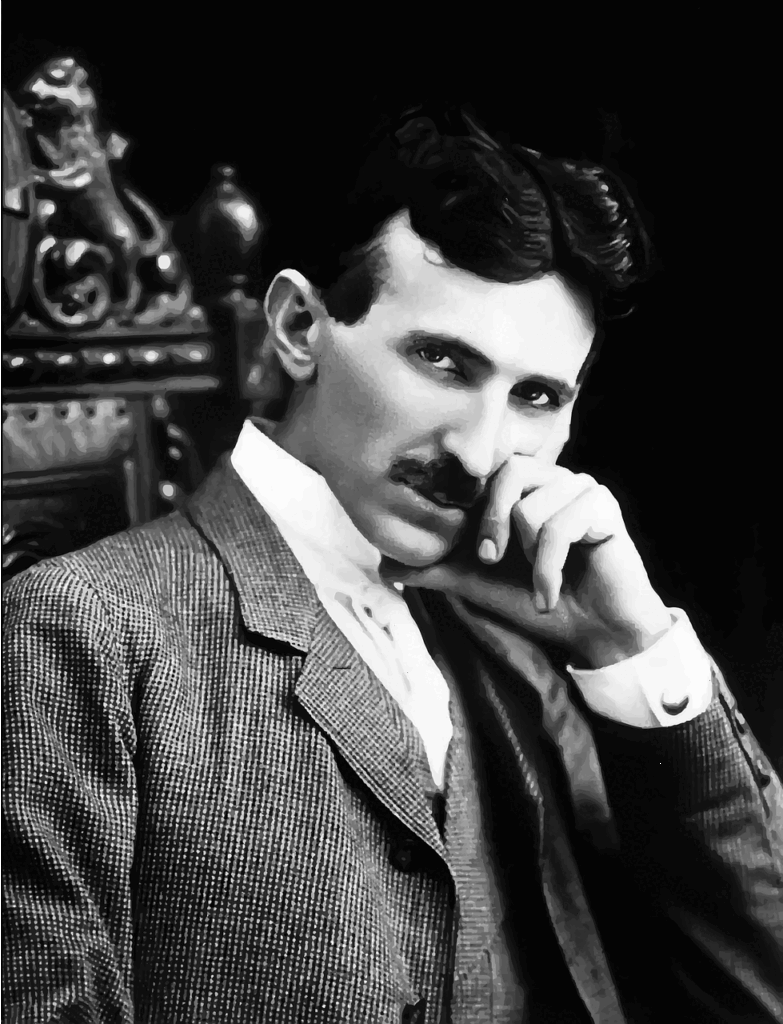The landscape of popular music is often defined by its most visible stars, the charismatic performers who captivate audiences from center stage. Yet, behind many of these celebrated acts, there exist visionary architects, the songwriters and producers whose creative genius lays the very groundwork for iconic sounds and unforgettable melodies. One such figure was Bobby Hart, a quiet force who, alongside his partner Tommy Boyce, engineered the sonic identity of The Monkees, crafting a catalog of hits that became synonymous with the vibrant, effervescent spirit of the 1960s.
Hart’s passing at 86 marks the end of an era, prompting a deeper look into a career that profoundly influenced pop culture, even as he often operated from behind the scenes. His contributions extended far beyond the made-for-television quartet, leaving an indelible mark on various artists and genres. From the sun-drenched anthems of The Monkees to other timeless classics, Hart’s innate understanding of melody and lyricism helped define what pop music could be: infectious, meaningful, and universally resonant.
This in-depth retrospective delves into the life and work of Bobby Hart, tracing his journey from a shy Arizona boy with a dream to a revered songwriter whose influence reverberates through generations. We explore the collaborative alchemy that was Boyce and Hart, their instrumental role in shaping the Monkees’ phenomenon, and the creative processes that birthed some of the decade’s most beloved tunes, revealing the ‘stillness that is the eye of the hurricane,’ as Monkees member Micky Dolenz eloquently described him.

1. **Early Life and Musical Awakening**Born Robert Luke Harshman on February 18, 1939, in Phoenix, Arizona, Bobby Hart’s early life laid the groundwork for his future musical pursuits. He was, by his own account in his 2015 memoir “Psychedelic Bubblegum,” a shy kid, yet possessed a “strong desire to distinguish” himself. This quiet ambition would ultimately find its most potent expression through music, a path he embarked upon with a singular dedication.
His connection to music began in the Pentecostal church his family attended, where he developed a lifelong relationship with the Hammond B-3 electric organ. This early immersion in gospel music and the emotive power of the organ undoubtedly shaped his melodic sensibilities and harmonic understanding, even as his aspirations turned towards the burgeoning sounds of rock and roll. The influence of these formative years would subtly inform his later songwriting, providing a depth and soulfulness beneath the bright pop veneer.
By high school, Hart’s musical toolkit had expanded considerably; he had become proficient in piano, guitar, and the Hammond B-3 organ. Beyond playing, he also indulged a fascination with radio, setting up his own amateur radio station in his bedroom, complete with a console, turntables, and microphones. This early foray into broadcasting hinted at a keen understanding of sound production and audience engagement, skills that would prove invaluable in his professional career.
Read more about: The Untold Depths of ‘Carol’: A Journey Through Its Creation, Contention, and Enduring Legacy

2. **The Road to Hollywood: From Harshman to Hart**After graduating from high school and fulfilling a stint as an Army reservist, Hart made the pivotal decision to move to Los Angeles in the late 1950s. Initially, his sights were set on becoming a disc jockey, a natural extension of his early radio experiments. However, the magnetic pull of songwriting and session musicianship soon redirected his focus, drawing him into the vibrant, competitive world of the Hollywood music industry.
It was during this period of seeking his artistic identity that Robert Luke Harshman underwent a transformative change. A producer, during an attempt by Hart to launch a solo career, suggested that “Harshman” was too long and proposed the shortened moniker “Hart.” The name stuck, marking not just a professional rebranding but also the beginning of his emergence as a distinct creative voice in the music scene. This period of early struggle and self-discovery was essential to forging the resilient songwriter he would become.
His early years in Los Angeles were a crucible of experience. He toured as a member of Teddy Randazzo and the Dazzlers, honing his performance skills and gaining crucial insights into the dynamics of the music business. It was also during this time that he collaborated with Randazzo and Bobby Weinstein, leading to one of his earliest significant songwriting credits: “Hurt So Bad,” a poignant ballad that would become a hit for Little Anthony and the Imperials and later be famously covered by Linda Ronstadt.

3. **A Fateful Partnership: The Genesis of Boyce and Hart**Amidst his burgeoning career as a songwriter and session musician in Los Angeles, Bobby Hart forged a crucial alliance that would define much of his professional life: his partnership with Tommy Boyce. Boyce, a singer and songwriter from Charlottesville, Virginia, possessed a personality that perfectly complemented Hart’s more reserved nature, described by Hart as “very unusual… spontaneous and extroverted, yet very cool at the same time.”
Their initial collaboration quickly yielded fruit, most notably contributing to the top 10 hit “Come a Little Bit Closer” for Jay and the Americans, a No. 3 Billboard hit in 1964. This early success solidified their bond and demonstrated their powerful chemistry as a songwriting duo. They discovered each other as kindred spirits in Hollywood in the late 1950s, both around 20 years old, sharing a deep love for music and big dreams, born into working-class families.
Their working relationship was unique, characterized by a symbiotic creative process that thrived under pressure. They even lived together in a Hollywood Hills home they playfully dubbed “the Boat House” due to its marine shape. It was this intense collaboration and mutual understanding that made them a formidable force, catching the attention of industry players looking for reliable hitmakers. This foundation of friendship and shared ambition would soon lead them to their most iconic project.

4. **Crafting the Monkees’ Identity: The Screen Gems Era**The burgeoning success of Boyce and Hart as a songwriting team caught the eye of Don Kirshner, the music supervisor for Screen Gems, who was assembling a made-for-television group openly modeled on The Beatles. Kirshner recruited the duo for his Screen Gems songwriting factory, assigning them the monumental task of creating the musical identity for The Monkees, a project that promised to be either a phenomenal success or a fleeting novelty.
This assignment was the “chance of a lifetime” for Hart, as he recounted in his memoir. He and Boyce were tasked with writing songs that would not only resonate with a mass audience but also complement the lighthearted antics of the TV show. Their ability to work best under seemingly impossible deadlines became a critical asset, allowing them to consistently deliver catchy, commercially viable material that perfectly fit the project’s vision.
Despite initial skepticism from some veteran producers who struggled to turn The Monkees into a “real band,” Boyce and Hart persisted. They approached the challenge with a savvy blend of pop sensibility and strategic recording techniques. Recognizing the dynamics of working with four actors, they realized that by recording each Monkee member singing individually, they could avoid the “horsing around and trying to impress one another,” ensuring focused vocal performances and a cohesive sound.

5. **”Last Train to Clarksville”: A Chart-Topping Blueprint**Among their earliest and most significant contributions to The Monkees’ repertoire was “Last Train to Clarksville.” This song became the group’s first No. 1 hit, released in 1966, and instantly established the sonic blueprint for the band’s initial success. Its infectious melody and narrative lyrics captured the imagination of a generation, solidifying The Monkees’ place in pop culture.
The genesis of the song is a fascinating anecdote of creative inspiration. Boyce and Hart deliberately studied The Beatles, not to imitate them absurdly, but to understand the spirit of their appeal. Hart, in particular, misheard a line from The Beatles’ “Paperback Writer,” believing Paul McCartney was singing “take the last train” near the end, when McCartney was actually singing “paperback writer.” This misinterpretation sparked the idea for a song centered around a train journey.
Drawing on this inspiration, they devised a distinctive, twangy guitar line for “Last Train to Clarksville,” reminiscent of the one in “Paperback Writer.” This attention to detail and ability to weave contemporary influences into their unique style resulted in a track that was both current and timeless. The song’s immediate success validated Kirshner’s vision and cemented Boyce and Hart’s role as the indispensable architects of The Monkees’ sound.
6. **The Monkees Theme Song: An Instant Anthem**Beyond their chart-topping singles, Boyce and Hart also penned perhaps the most recognizable piece of music associated with The Monkees: their iconic theme song. With its memorable opening line, “Here we come, walkin’ down the street,” and the enduring chant, “Hey, hey, we’re the Monkees,” the theme song became an instant anthem, intrinsically linked to the made-for-television group and its widespread appeal.
The creation of the theme song itself was a testament to their spontaneous creative process. As Hart recounted in his memoir, the inspiration struck during a casual walk. “Boyce began strumming his guitar and I joined in by snapping my fingers & making noises with my mouth that simulated an open & closed hi-hat cymbal,” Hart wrote. This organic, improvisational beginning quickly evolved into the perfect musical accompaniment for the show’s energetic opening.
The theme song served multiple crucial functions: it introduced the characters, set the playful tone of the sitcom, and most importantly, embedded the band’s name and catchy jingle firmly into the public consciousness. Its simplicity and undeniable catchiness ensured that even those unfamiliar with the show instantly recognized the phrase “Hey, hey, we’re the Monkees,” making it a cornerstone of their multimedia empire.

7. **Beyond the Hits: The “Unique Monkee Sound”**While specific hits like “Last Train to Clarksville” and the theme song showcased Boyce and Hart’s songwriting prowess, their contribution to The Monkees was far more comprehensive. As producers, they were instrumental in “creating the unique Monkee sound we all know and love,” a sentiment echoed by Micky Dolenz. They didn’t just write songs; they crafted an entire sonic identity.
This involved a nuanced approach to production, which included using their own backing musicians, the Candy Store Prophets, as session players for the Monkees’ debut album. This strategic decision ensured a consistent, polished sound that captured the infectious energy of their compositions. The eponymous, million-selling debut album included six songs from Boyce and Hart, underscoring their profound influence from the very beginning of the project.
Their musical approach was a careful balance of commercial imperative and artistic sensibility. They caught the spirit of the 1960s, incorporating subtle elements like Indian instruments and lyrics referencing “the young generation,” but always ensuring their music remained accessible and broadly appealing. This meticulous attention to both songwriting and production created a cohesive and captivating sound that was distinctly Monkees, solidifying their legacy as the essential architects behind the pop phenomenon.

8. **Boyce and Hart as Recording Artists: Stepping Out of the Shadows**While their names became synonymous with The Monkees’ effervescent pop, Bobby Hart and Tommy Boyce were not content to simply remain behind the studio glass. They harbored their own aspirations as performers, stepping into the spotlight as a recording duo and forging a distinct identity that showcased their harmonious blend of songwriting and vocal talent. Their decision to pursue a career as recording artists allowed them to express their creative vision directly, adding another fascinating dimension to their already impressive musical journey.
Between 1967 and 1969, a period of immense productivity and creative exploration for the pair, Boyce and Hart released three albums that further solidified their presence in the pop landscape. These seminal works, titled “Test Patterns,” “I Wonder What She’s Doing Tonite?”, and “It’s All Happening On The Inside,” presented a slightly different flavor than their Monkees output, often delving into more introspective themes while retaining their signature melodic appeal. Each album was a testament to their enduring chemistry and evolving artistry.
Their burgeoning fame as recording artists extended beyond the airwaves, bringing them into the living rooms of millions through popular television programs. Boyce and Hart made memorable appearances on iconic sitcoms of the era, including “I Dream of Jeannie” and “Bewitched,” lending their vibrant personalities and musical charm to these beloved shows. These cameos offered a unique opportunity for fans to connect with the duo directly, seeing the faces behind the hits and experiencing their charisma firsthand, further elevating their public profile.
These performances weren’t just promotional stunts; they were genuine reflections of Boyce and Hart’s versatility and appeal. They seamlessly integrated their musical acts into the comedic narratives, charming audiences with their catchy tunes and easygoing demeanor. This cross-media presence was a natural extension of their roots in the made-for-television world of The Monkees, demonstrating their innate understanding of how to connect with a broad audience through both sound and image, a skill that defined much of their career.

9. **Charting Their Own Course: “I Wonder What She’s Doing Tonite?”**Among their endeavors as recording artists, one track stands out as a definitive moment for Boyce and Hart: their gold-selling single, “I Wonder What She’s Doing Tonight.” Released in 1967, this introspective yet undeniably catchy tune ascended to No. 8 on the Billboard Hot 100, marking their most significant commercial success as performers. It became an anthem of wistful contemplation, capturing the bittersweet essence of youthful longing and unanswered questions that resonated deeply with a generation.
The song’s enduring appeal lies in its relatable narrative and polished pop craftsmanship. “I Wonder What She’s Doing Tonight” showcased Boyce and Hart’s masterful ability to combine poignant lyrical themes with an irresistible melody and a driving rhythm, hallmarks of their signature style. It was a perfectly packaged pop record that not only dominated the charts but also carved out a distinct space for the duo independent of their Monkees’ work, proving their capabilities as front-and-center artists.
This hit single was more than just a catchy tune; it was a reflection of their philosophical approach to pop music, blending emotional depth with commercial accessibility. Its success illustrated how Boyce and Hart could translate personal sentiments into universal experiences, crafting songs that felt both intimate and broadly appealing. The track’s meticulous production and heartfelt delivery ensured its place as a classic of the era, frequently featured on compilations and remembered fondly by fans.
“I Wonder What She’s Doing Tonight” also served as a critical touchstone in their career, demonstrating to the industry and the public alike that their talents extended beyond just writing for others. It provided them with a platform to tour and further engage with their fan base, building a legacy that intertwined their roles as both revered songwriters and accomplished recording artists, a balance few achieve with such grace.
10. **Beyond the Monkees: A Diverse Songwriting Palette**While The Monkees remain the most prominent testament to their songwriting genius, Bobby Hart’s creative fingerprint, often alongside Tommy Boyce, extended across a remarkably diverse spectrum of artists and genres. Their ability to tailor hits to different performers, from soulful R&B groups to country crooners, underscored their profound versatility and innate understanding of melodic construction. Their songs became touchstones for many, demonstrating a reach far wider than any single television show could encompass.
One of Hart’s earliest significant songwriting credits, penned with Teddy Randazzo and Bobby Weinstein, was “Hurt So Bad.” This poignant ballad found immense success as a top 10 hit for Little Anthony and the Imperials, showcasing a raw, emotional depth that transcended pure pop. Decades later, its timeless quality was reaffirmed when Linda Ronstadt famously covered it, introducing the song to a new generation and cementing its status as a classic. This early triumph hinted at the breadth of Hart’s emotional and melodic range.
The duo’s collaborative prowess with Boyce also yielded “Come a Little Bit Closer,” a vibrant and infectious track that became a No. 3 Billboard hit for Jay and the Americans in 1964. This upbeat anthem captured the energetic spirit of the mid-sixties, further establishing Boyce and Hart as reliable hitmakers who could craft songs that resonated across diverse pop sensibilities. Their early successes proved they were not one-hit wonders but rather consistent creators of chart-topping material.
Their songwriting mastery even touched the iconic Dean Martin, who lent his smooth vocals to their composition “Little Lovely One,” adding a touch of sophisticated charm to their catalog. Such diverse collaborations highlight their ability to adapt their craft to various artistic interpretations, proving that their melodies and lyrics possessed a universal appeal capable of captivating audiences across different musical tastes and performance styles, truly making them behind-the-scenes architects of pop.

11. **From Soap Operas to Silver Screens: Unsung Thematic Genius**Bobby Hart’s remarkable talent for crafting memorable melodies extended far beyond traditional pop songs, finding its way into the fabric of daily life through television and film. His ability to distill emotion and narrative into concise musical statements made him an invaluable contributor to various multimedia projects, demonstrating an often-unsung genius for thematic composition that captivated audiences in unexpected ways. His work ensured that his music permeated countless households, even for those unaware of his name.
Perhaps one of his most ubiquitous, yet often uncredited, contributions is the theme music for the long-running daytime soap opera “Days of Our Lives.” Since its debut in 1965, the instantly recognizable melody has heralded decades of drama, romance, and intrigue, becoming an intrinsic part of American television culture. This enduring theme, co-written with Tommy Boyce, showcases their unparalleled knack for creating music that is both iconic and deeply embedded in the public consciousness, a testament to their lasting impact.
Hart’s versatility was further recognized when he co-wrote “Over You” with Austin Roberts, an Oscar-nominated ballad featured in the 1983 drama “Tender Mercies.” Performed poignantly by Betty Buckley, the song brought a sensitive depth to the film’s narrative, showcasing Hart’s ability to craft material suitable for the silver screen’s emotional demands. This nomination underscored his legitimacy as a profound songwriter capable of contributing to the most prestigious artistic endeavors.
In the spirit of The Monkees, Hart also contributed material to “another TV act, the Partridge Family,” further cementing his role in shaping the sound of beloved made-for-television musical groups. His collaborations continued into later decades, including working with Dick Eastman on “My Secret (Didja Gitit Yet?)” for the R&B group New Edition, demonstrating an impressive capacity to remain relevant and influential across evolving musical landscapes and generational shifts.

12. **A Voice for Change: Political Activism and “L.U.V. (Let Us Vote)”**Beyond their undeniable contributions to the world of entertainment, Bobby Hart and Tommy Boyce were also artists with a keen social conscience, unafraid to leverage their platform for political advocacy. Their involvement in critical issues of their time showcased a depth of character and a commitment to civic engagement that added another layer to their already multifaceted careers. They understood the power of music to inspire and mobilize, channeling their creative energy into meaningful causes.
In 1968, a year of profound social and political upheaval, Boyce and Hart actively campaigned for Robert F. Kennedy during his presidential bid. Their support for Kennedy underscored their alignment with a vision of hope and progress, reflecting the idealism and transformative spirit of the era. Their direct involvement with a presidential campaign demonstrated their willingness to put their convictions into action, stepping into the political arena to support a candidate they believed in.
Their most explicit foray into political songwriting came with the brassy track, “L.U.V. (Let Us Vote),” released in support of the movement to lower the voting age to 18. This powerful anthem became the official campaign song for the cause, lending its energetic voice to a nationwide push for youth enfranchisement. The song was instrumental in galvanizing support, contributing to the eventual ratification of the 26th Amendment in 1971, which enshrined the right to vote for 18-year-olds.
“L.U.V. (Let Us Vote)” was a testament to their belief in the democratic process and the importance of youth participation. It highlighted their ability to craft music that was not only commercially appealing but also imbued with a powerful message, demonstrating how pop music could serve as a vehicle for social change. Their political activism remains a significant, though perhaps less widely celebrated, aspect of their enduring legacy, showcasing a dedication to more than just catchy tunes.

13. **The Philosophy of Pop: “Psychedelic Bubblegum” and the Art of Listening**Bobby Hart’s creative process was not merely an exercise in talent but a profound philosophy of pop, deeply rooted in an astute understanding of audience and an almost uncanny ability to capture the zeitgeist. He articulated this approach in his 2015 memoir, aptly titled “Psychedelic Bubblegum: Boyce & Hart, the Monkees and Turning Mayhem Into Miracles,” a title that provocatively embraced the often-derided “bubblegum” label while hinting at deeper artistic intentions.
At the heart of their success was a meticulous attention to what resonated with the public. Hart emphasized the importance of “listening to the Top 40 chart, with its ‘instant updates on the kind of music the kids were loving and buying.'” This wasn’t about imitation but about understanding the pulse of popular culture, identifying trends, and then infusing them with their unique melodic and lyrical sensibility. It was a strategic, yet deeply intuitive, approach to hit-making that proved incredibly effective.
Furthermore, Hart revealed a more esoteric aspect of their creative method: “we had learned to listen to conversations, our own and others, our subconscious minds constantly scanning the soundtracks of our lives for that elusive song title or catchy line.” This profound observational skill allowed them to tap into the everyday experiences and unspoken desires of their audience, transforming snippets of dialogue or overheard phrases into lyrical gold, making their songs universally relatable.
The term “bubblegum,” often applied dismissively to their style, especially that of The Monkees, was viewed by Hart as an opportunity rather than a limitation. For him, it represented a vibrant, accessible form of pop music that could also carry subtle complexities. This philosophical stance demonstrated their commitment to crafting infectious, joyful music that, beneath its bright veneer, often contained clever lyrical turns and sophisticated arrangements, a true testament to the “psychedelic bubblegum” ethos they championed.

14. **An Enduring Legacy: Collaborations, Documentaries, and a Quiet Influence**The impact of Bobby Hart’s work, particularly his partnership with Tommy Boyce, resonated far beyond their initial successes, weaving itself into the fabric of popular music and culture for decades. Their enduring legacy is not just measured in chart positions but in the continued collaborations, the retrospective appreciation, and the profound tributes from those whose lives and careers they touched, illustrating a quiet yet profound influence that truly shaped an era.
In the mid-1970s, the irresistible chemistry of Boyce and Hart rekindled with two of their Monkees collaborators, Micky Dolenz and Davy Jones. This reunion, forming the supergroup Dolenz, Jones, Boyce & Hart, resulted in a 1976 album and a successful touring act. Though they didn’t achieve the same chart-topping success as The Monkees, this collaboration was a testament to the enduring bond and mutual respect among the artists, a joyful revisiting of a shared musical past.
Their influence received renewed attention in the 1980s when The Monkees experienced a significant comeback, reintroducing their classic hits to a new generation of fans. This resurgence reaffirmed the timeless quality of Boyce and Hart’s compositions, proving that their melodic hooks and infectious energy transcended the confines of their original release era. Their songs found new life, delighting old fans and captivating new listeners alike, cementing their place in pop history.
The story of their creative partnership was immortalized in “The Guys Who Wrote ‘Em,” a 2014 documentary that delved into the depths of Boyce and Hart’s musical and political contributions. This film provided a comprehensive look at their careers, offering insights into their collaborative process, their personal lives, and their lasting impact. It was a fitting tribute to two unsung heroes of pop, finally giving them the narrative storytelling they deserved.
Micky Dolenz, the last surviving member of The Monkees, eloquently captured Hart’s essence in his tribute: “His talent, charisma, good humor and calmness in the face of what at times was nothing less than a maniacal roller coaster ride often brought a sense of peace that heartened everyone around him. He was the stillness that is the eye of the hurricane.” This poignant description encapsulates the profound, steady influence Hart exerted, a quiet force who masterfully navigated the tumultuous waters of the music industry. The Monkees’ official account also echoed this sentiment, stating, “He will be remembered for his incredible talent and his innate spirituality.” Tragically, Tommy Boyce died by suicide in 1994 at age 55, a poignant note in the story of this intertwined duo, leaving Hart to carry forward their shared legacy with grace and unwavering dedication.
Read more about: Robert Redford: A Life in Pictures – Tracing the Iconic Journey of Hollywood’s Reluctant Star, Director, and Environmental Champion
Bobby Hart’s passing at 86, though a somber moment, allows us to reflect not just on a life well-lived, but on a career that subtly, yet profoundly, shaped the landscape of popular music. He was a master craftsman, a lyrical philosopher, and a quiet force who, alongside Tommy Boyce, spun seemingly simple pop tunes into timeless anthems. His work, whether behind the scenes for a made-for-TV sensation or in the spotlight as a recording artist, consistently demonstrated an unparalleled knack for melody, a keen understanding of the human heart, and an unwavering commitment to the art of the song. As the reverberations of his music continue to echo through generations, Bobby Hart remains a shining example of the enduring power of a truly great songwriter, a maestro whose quiet genius will forever resonate in the soundtrack of our lives.





